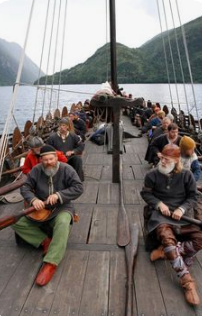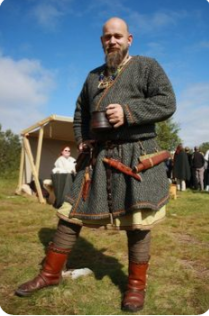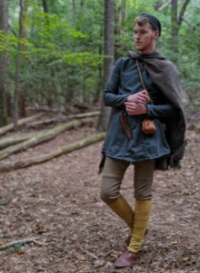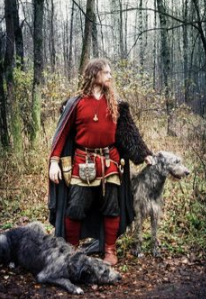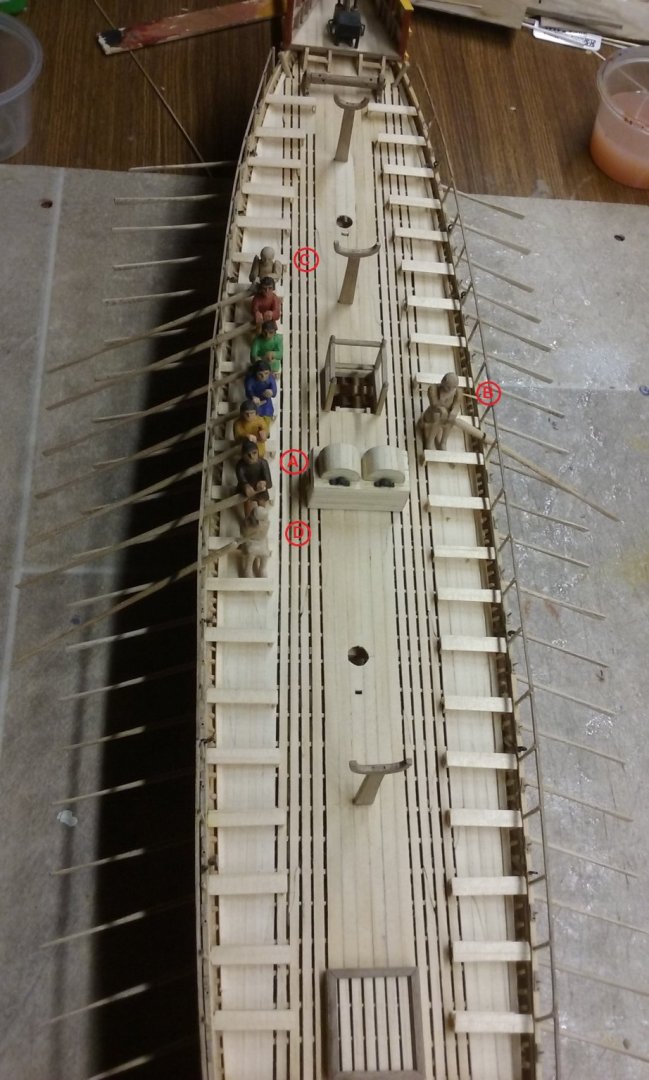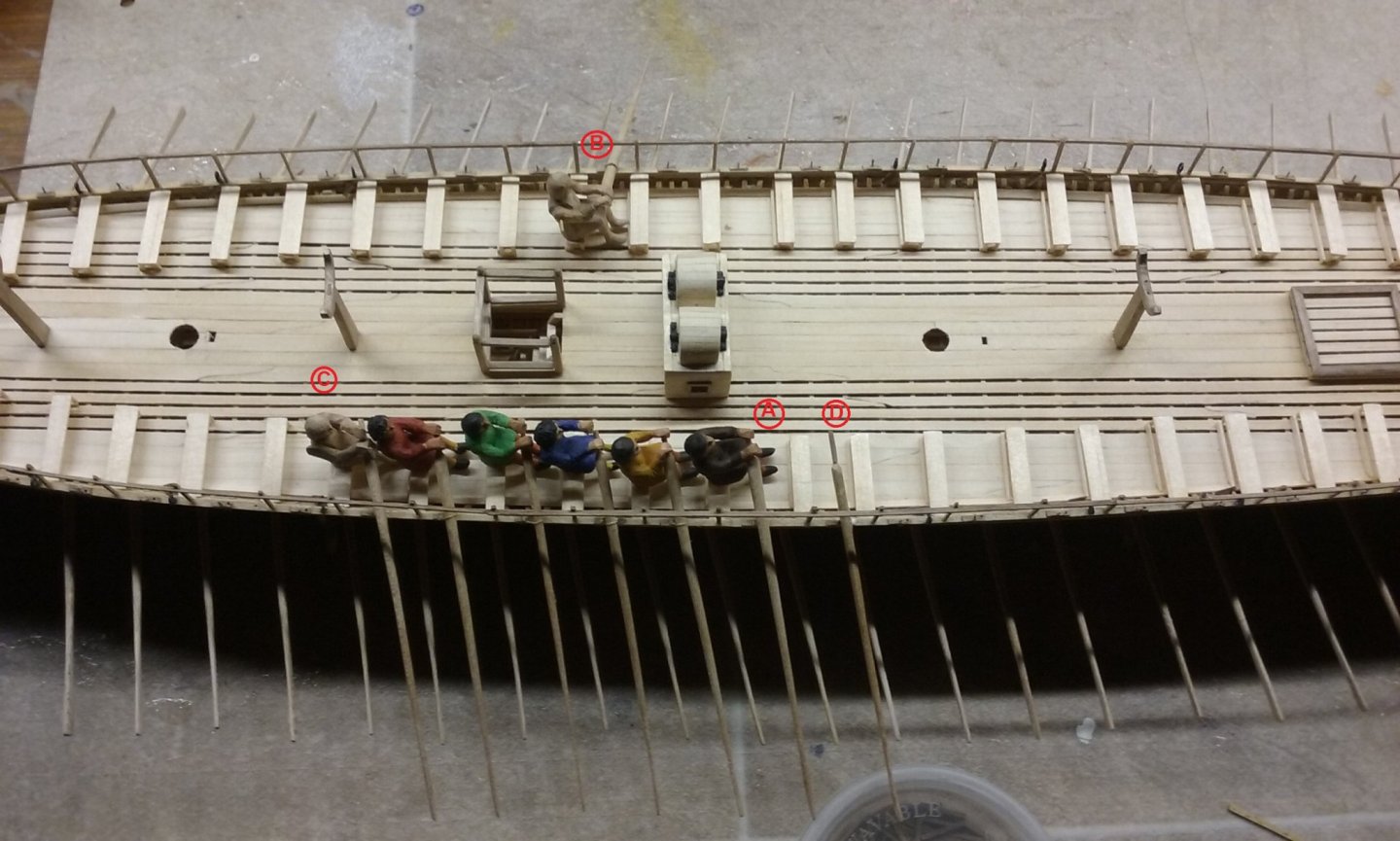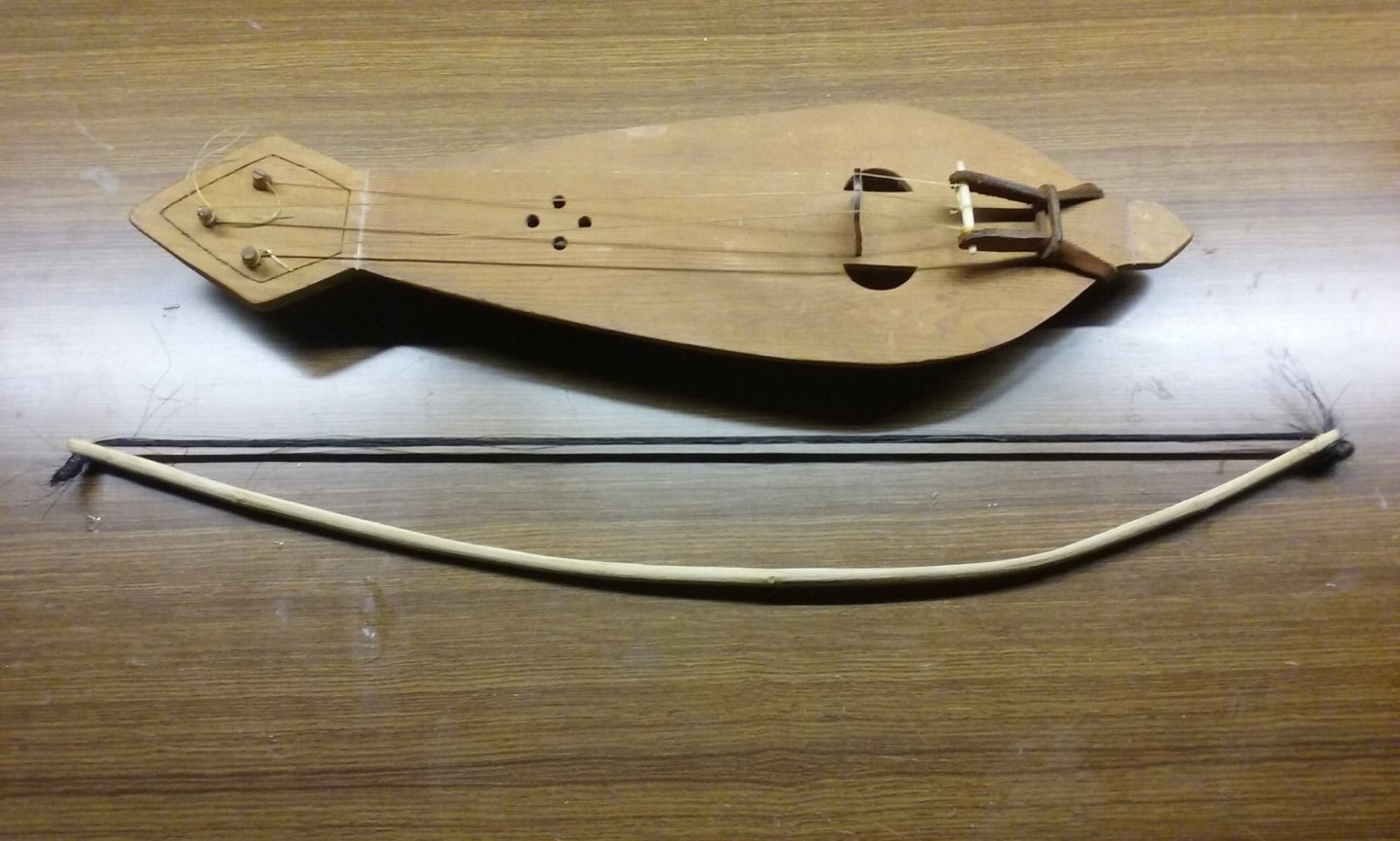-
Posts
7,986 -
Joined
-
Last visited
Content Type
Profiles
Forums
Gallery
Events
Everything posted by Louie da fly
-

Matthias from Berlin, Germany says Hello
Louie da fly replied to victory78's topic in New member Introductions
Yes, I like him too. That's very good - hard to believe he's your first attempt. What's the grain like on linden wood? -

Hello from the not so sunny Spain.
Louie da fly replied to Jandrus's topic in New member Introductions
Welcome Jandrus! Don't forget to start a build log for your HMS Beagle. You'll find quite a few Logs for her on MSW, which you will probably find helpful. Just type Beagle into the search bar at the top of the page. I'm a fan of ships of the 15th century, and the Basques were the leaders in maritime design and shipbuilding at that time and for some time after. Am I right in thinking that Vasco da Gama's first name translates into English as "the Basque guy"? -
Mind if I pull up a chair? That's a very elegant longship. Much nicer in my opinion than the generic Gokstad ship (though I still love the Oseberg ship as well - very beautiful)
-
Don't go there, Cathead! That way lies madness! I've got 48 oarsmen to do, you'd have 58! (I just checked on your build log). And anyhow, if your sail is up, you don't have to have anybody rowing. Add to that, you can buy Viking figures, though there are some pretty bad ones out there. Having been a Viking period re-enactor for over 20 years I know. No, they didn't wear ugg boots, helmets with horns, they didn't look like the guys on the tv series Vikings, they wouldn't have worn armour while sailing (it's heavy, plus what happens if you fall overboard) . . . more like this- not a bad selection (the last one is very high status, and I have to say, super-cool): [Edit]: NOT LIKE THESE! [/Edit] OTOH, if you just want to carve a few crew members, maybe that wouldn't send you bananas. Always nice to have another person on MSW carving figures.
-
A step forward. To start with, there were several times in finalising and positioning an oarsman where I had to sit on my hands while I waited for glue to dry between one step and the next, but now I've worked out a way to increase the number I'm working on at any one time, so while I'm waiting for the glue to dry on one, I'm working on another. Unfortunately, there is a limit to how many things I can do at once. For example, although I could glue all the upper oars onto the gunwale at the same time, I don't want to because I could easily undo the work with a careless hand movement. However, once the oarsman is permanently in place the oar is also fixed more permanently -it's glued both to the gunwale and to the hands of the oarsman, who himself is glued to the seat and his feet are glued to the deck. However, as I have now completed several figures I've become able to work on a new figure at each end of the row that's already done. So Figure A has just been completed - he's had his final shaping and sanding, and has been painted and glued in place. Figure B is the first on the starboard side. He's got his arms shaped and glued on, and he's ready to be removed from his seat, and filler put in the gaps between arms and body ready to finish the shaping. Figure C has just had his arms temporarily glued on, ready to be pinned to the body so I can do the hands and roughly shape his arms. This usually takes several tries - I work out where and what shape I think the hands should be in relation to the oar handle, unpin the arm, carve it to the shape I've decided on, then pin the arm back in place. Check to see what still needs to be done, take it off, shape it some more, put it back on again etc till I'm happy with it. Once I've got the arms and hands the way I want them, I glue them permanently in place, as in figure B. Finally, as the figure at A is now complete, that leaves me able to glue the next oar to the gunwale (D). As you can see in the first photo the oarblade is being supported (by a little plastic tub) at the same height as the others till the glue dries. In the second photo I've got a bit ahead of myself - I've placed the next oarsman on the bench, but in fact I don't do this till the glue dries on the oar, as it's fatally easy to dislodge the oar by careless hand movements (don't ask me how I know). Once the starboard figure (B) is permanently in place I'll be able to have four oarsmen in progress at the same time - one at each extreme end of the row on the port side, and the same for the starboard side. I have to keep up the supply of arms, so in between times I'll be cutting out new ones and carving them roughly to shape. Not quite mass-production, but a faster procedure than before.
-
I agree about bamboo. Per http://www.ijstr.org/final-print/nov2015/Comparative-Analysis-Of-The-Tensile-Strength-Of-Bamboo-And-Reinforcement-Steel-Bars-As-Structural-Member-In-Building-Construction.pdf steel is 2 to 3 times stronger than bamboo, but weighs 6 to 8 times as much .Overall the tensile strength of bamboo per unit of weight is 3 to 4 times that of steel. I occcasionally use it in ship modelling. It's very tough and strong.
-
Stick close to your desks and never go to sea, And you all may be rulers of the Queen's Navee! Damn! I derailed my own thread again!
-

Matthias from Berlin, Germany says Hello
Louie da fly replied to victory78's topic in New member Introductions
Beautiful work, Matthias. -
I've seen pictures of the Sutton Hoo lyre reconstruction. As I understand it not all that much of the original survived and the reconstruction was based as much on contemporary pictures as on the artefact itself. I don't remember seeing the lyre when we went to the British Museum to see the Sutton Hoo exhibit. Perhaps I was distracted by the magnificent gold and garnet work and the amazing helmet.
-
Nice crisp work, Gerry. This is a good looking build.
- 19 replies
-
Druxey, that's from Hearts of Oak, not G & S. But I agree - no hope at all . . . By the way, I neglected to mention that according to 10th century Byzantine naval manuals (by Nikephoros Ouranos and Emperor Leo VI) the oarsmen doubled as marines, fighting the ship when it went into battle. They recommend that the bravest and strongest crew members serve on the upper bank of oars.
-
Hi Gerry. Good to see yor build log up and going. For planking I'd recommend you have agood look at the tutorials at https://modelshipworld.com/forum/98-planking-downloads-and-tutorials-and-videos/ And also see Chuck's HMS Winchelsea build. Start out with fairing the frames - so the edges of the frames aren't at right angles, they follow the curve of the hull - you can see that in the photo in his post of March 18, 2009 at And for the planking itself, see the sequence starting at August 28, 2019 at Your Occre model has two layers of planking - one to get the shape pretty much right, which can then be tweaked (with wood filler etc) to get all the curves smooth, and a second layer of planking over that to make it all perfect. That makes it a lot easier on the modeller. Small mistakes in the first layer aren't a major disaster, and by the time you get to the second layer you've had a lot of practice and are getting much more accomplished. Anyhow, enough of that. I'm looking forward to seeing how it all goes with your next steps.
- 19 replies
-
Well, perhaps not a fine instrument, but an interesting one . . . Replica of a mediaeval Russian fiddle called a smyk or gudok, 11th century - I made it almost 30 years ago, when I was into mediaeval re-enactment. It's based on an archaeological find. No sound post, so it's very quiet. To someone used to a modern violin, it's absolute murder to play this thing.
-
Hi Gerry, and welcome. That's a very nice mandolin. I have a violin that belonged to my grandfather with a fiddleback grain on the back like yours. You've done a very nice job. Your bending iron is going to get a fair bit of work - as I recall, the Terror has a particularly blunt bow. Make sure you have a good close look at MSW's planking tutorials - they're invaluable and will help you avoid some of the commoner problems most people encounter with planking. And do start a build log. Nobody will bite, I can assure you. I know it can be a bit daunting putting your stuff up in front of people whose skills are, to put it mildly, amazing. I'm still gobsmacked by some of the builds up on MSW, and even now I feel I'll never approach their skill levels. But everybody was a newbie once, and there are plenty of beginners with build logs here. Your skills as a luthier probably put you in a better position than most people who are just starting out. And don't worry about making mistakes - you're bound to at some point, it's just part of the process, and even the most experienced still do it (though their mistakes are usually much more interesting than mine). But very few mistakes are fatal to the build and just about all of them can be remedied. The members are supportive and encouraging, and very willing to give help and advice. In fact a log is a very good place to ask questions as you progress with your build.
-
Looking forward to seeing your build log
-
Nice retrospective, Richard! She's looking good. That's a very attractive vessel, and you're certainly doing her justice. I like the idea of the dummy deck. I've never seen that done before, and I've made a mental note in case I want to try it myself in a future build.
- 41 replies
-
- artesania latina
- dallas
-
(and 1 more)
Tagged with:
-

New member from Central Scotland
Louie da fly replied to Rik Thistle's topic in New member Introductions
Welcome, Richard! ([Bluebottle voice]Thinks: now I really need to have a look at that build log . . .[/Bluebottle voice])- 16 replies
-
- new member
- dallas
-
(and 1 more)
Tagged with:
-

Matthias from Berlin, Germany says Hello
Louie da fly replied to victory78's topic in New member Introductions
Welcome to MSW, Matthias! I'm not sure - is your fishing boat a model or full sized? Whichever it is, it would be good to see photos! -
Nice crisp work. From personal experience I know how hard these castles can be , so - kudos.
- 179 replies
-
- shipyard
- wütender hund
-
(and 1 more)
Tagged with:
-
Not really - it is after all the Emperor's personal ship. And Byzantine oarsmen (and in fact all oarsmen until the Renaissance) - were free men not slaves (🎶For who are so free as the sons of the waves?🎶) - sorry; couldn't help myself. Oh, and I have a cunning plan which will mean that 8 of the oarbenches won't be manned. But that will involve more work, not less . . . That's all I'm going to say for the moment - I want to keep it as a surprise. But don't forget - you heard it here first!
About us
Modelshipworld - Advancing Ship Modeling through Research
SSL Secured
Your security is important for us so this Website is SSL-Secured
NRG Mailing Address
Nautical Research Guild
237 South Lincoln Street
Westmont IL, 60559-1917
Model Ship World ® and the MSW logo are Registered Trademarks, and belong to the Nautical Research Guild (United States Patent and Trademark Office: No. 6,929,264 & No. 6,929,274, registered Dec. 20, 2022)
Helpful Links
About the NRG
If you enjoy building ship models that are historically accurate as well as beautiful, then The Nautical Research Guild (NRG) is just right for you.
The Guild is a non-profit educational organization whose mission is to “Advance Ship Modeling Through Research”. We provide support to our members in their efforts to raise the quality of their model ships.
The Nautical Research Guild has published our world-renowned quarterly magazine, The Nautical Research Journal, since 1955. The pages of the Journal are full of articles by accomplished ship modelers who show you how they create those exquisite details on their models, and by maritime historians who show you the correct details to build. The Journal is available in both print and digital editions. Go to the NRG web site (www.thenrg.org) to download a complimentary digital copy of the Journal. The NRG also publishes plan sets, books and compilations of back issues of the Journal and the former Ships in Scale and Model Ship Builder magazines.



